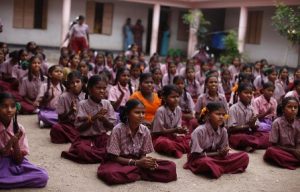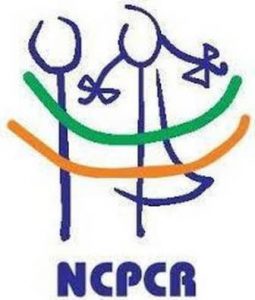Child Protection: Role of Community Based Watchdog Mechanisms
Keeping the sole focus on child protection will not bring about a sustainable change. We need to understand child, family and community as one unit, and that is why there is also a need to look at the issue of livelihood that revolves around it.
“Child labourers were always high in our village. Even before the pandemic, during interim holidays our parents used to take us to work with them for financial support. Now that  the lockdown has relaxed, the company’s supervisors are brainwashing our parents to send us to work for them. Children below my age have also been becoming child labourers.” These were the opening remarks of Kanimozhi, a 11th class student from Perundurai, Tamil Nadu, during a webinar conducted by Praxis, Save the Children, Lehr and CARE.
the lockdown has relaxed, the company’s supervisors are brainwashing our parents to send us to work for them. Children below my age have also been becoming child labourers.” These were the opening remarks of Kanimozhi, a 11th class student from Perundurai, Tamil Nadu, during a webinar conducted by Praxis, Save the Children, Lehr and CARE.
The webinar was the 20th such initiative on behalf of Praxis to bring forth the voices from the margins during the pandemic situation. After studies done by Praxis pointed towards a high risk of both child trafficking and child labour during the pandemic, they brought together Child Champions and organisations who worked for child protection, to set a way forward in the right direction in order to curb such evils in the society.
Child labour and bonded labour is a serious issue which not only affects the growth of a budding individual, but also of a country as well. They lead to high rates of school dropouts, and due to their tender age, children also face discrimination at the workplaces. They are not regularly being paid for their work and are often under paid as well. “Even if these children are given Rs100 as wages they would be willing to work for more than eight hours,” said Jayashree from Erode, Tamil Nadu, working in the field of Child Welfare and Child Protection with the help of CARE. Sadly, the major challenge she faced was in recording the problems faced by the children and following up on the same. “Be it a DCPU office, Police Station or at Panchayat at village level, no one follow up properly.
Most of these cases will get stopped midway as all the departments do not have authority that extends to all. Everyone has been focusing on the pandemic and not on the issues of children”, Jayashree said.
Also Read : COVID-19 and Children: Effective Response and Mitigation Strategies
Talking about the defense mechanisms, Ramendra Mohanti, District Child Protection Officer (DCPO) of South 24 Parganas, West Bengal, a leading district for trafficking and other child protection issues, said that in the present context of COVID-19, child marriage, child labour and other child protection issues have increased. In order to put a check on the same, they have set up a child protection committee as a defense mechanism. “In 29 blocks, 4882 VLCPCs and 151 ward child protection committees are there. We mostly depend on this Child Protection Committee to resist child labour or child trafficking. Different awareness programmes in schools, colleges and communities were also organised with the aim to eradicate child marriage and child trafficking. We are getting the results now  and it can be said that we could stop child marriages in our district completely”, said Ramendra optimistically. Other measures that were taken by Mamata, a 16-year old Child champion and Bishnupriya, a VLCPC member from Sarberia Agarhati Gram Panchayat, under North 24 Parganas, West Bengal, were to keep an eye on the migrants who were coming to their villages after the lockdown. “Many other unknown people are also entering our village along with the migrant workers during this time. We are trying to monitor this situation and resist child trafficking by collecting as much information about them as we can”, said Bishnupriya.
and it can be said that we could stop child marriages in our district completely”, said Ramendra optimistically. Other measures that were taken by Mamata, a 16-year old Child champion and Bishnupriya, a VLCPC member from Sarberia Agarhati Gram Panchayat, under North 24 Parganas, West Bengal, were to keep an eye on the migrants who were coming to their villages after the lockdown. “Many other unknown people are also entering our village along with the migrant workers during this time. We are trying to monitor this situation and resist child trafficking by collecting as much information about them as we can”, said Bishnupriya.
After the discussions, the key question that came up was, “what canbe the best kind of local level arrangement suited as watchdogs or custodian of rights of children?” Anindo Banerjee, Head, Programme Initiatives, Praxis Institute for Participatory Practices, answered that it was quite evident for a structure of a village-level child protection committee, a committed role of local organisation played a very crucial role. “To trigger the role of the primary stakeholders or communities, Civil Society Organisations (CSOs) need to work in collaboration with group of communities and some likeminded partners to explore what makes a community to response to an issue that is not seen as any”, Anindo said.
Further, Anindo also stressed that the primary intervention is continuous space, dialogue and reflection where no external judgements should be made.
Also Read : Child Pornography: Are Statutory Frameworks Apposite in India?
The intent is to create an opportunity to public stakeholders who make up holistic judgement about their options, examine their practices if it is certainly natural or adopted. “One also needs to see their natural appetite for change, examine the scenario, potential leadership who would extend naturally to the process and then employ that leadership in a way that can make a choice in various circumstances. Continuous dialogue and interactions with groups play an important role for studying community ownership and to build a natural ownership”, Anindo added.
In order to take complete control of the situation, both the communities and the CSOs should work hand in hand. Child protection is a law enforcement subject that moved under the CSOs and is now in the community ownership. It needs multiple stakeholders such as Government, Panchayat, community and individual level as well to function effectively.Since, wherever more than one organisations are working for child protection, better results are assured. On the other hand, for a sustainable change, CSOs should only act as a facilitator to decrease the dependency of communities and a mechanism should be created where the government and communities are compatible enough to take care of the issues themselves.
